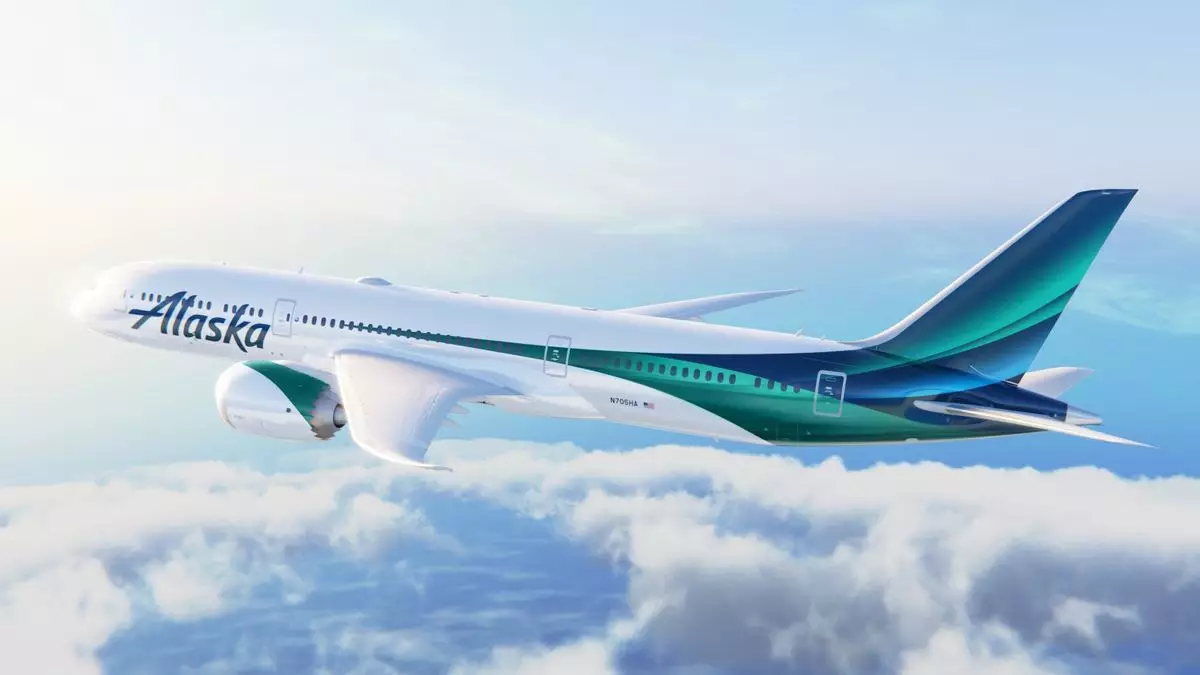Alaska Airlines is stepping decisively into the international arena, signaling a major shift in its operational strategy. The upcoming launch of flights connecting Seattle with London Heathrow and Reykjavik marks a bold move to position the airline as a competitive global player. This expansion is not just about new routes; it embodies a transformation that could redefine Alaska’s identity from a regional carrier to a respected international airline. By dedicating a new long-haul base at Seattle, the airline demonstrates its ambition to leverage its Pacific Northwest roots to capture global markets.
What sets this expansion apart is Alaska’s commitment to offering a distinctive onboard experience, featuring state-of-the-art Boeing 787 Dreamliners with a thoughtfully designed aesthetic inspired by the natural beauty of the aurora borealis. This isn’t merely about functionality; it’s about creating a sense of wonder and adventure from the moment passengers step onboard. The new exterior livery for these aircraft intends to symbolize the airline’s fresh and innovative approach, blending the natural splendor of the North with modern aerospace engineering. It’s a calculated effort not just to fly passengers across distances but to inspire loyalty through an enhanced brand identity.
Challenging Giants: Strategies and Competitive Edge
Entering the crowded European market is no small feat, especially with established giants like British Airways, Virgin Atlantic, and Delta vying for passengers on the Seattle-Heathrow route. Alaska Airlines’ strategy to carve out its niche involves more than just launching flights; it emphasizes a tailored experience and strategic timing. The airline plans to operate the Seattle-London route daily and year-round, ensuring convenience and reliability—a crucial factor for business travelers and leisure tourists alike.
What is particularly intriguing is Alaska’s careful fleet management. The airline will use Boeing 787 Dreamliners equipped with luxurious suites and lie-flat seats in business class, offering a premium experience that can rival—and perhaps surpass—competitors. Additionally, the airline’s choice to operate Boeing 737 Max aircraft between Seattle and Iceland indicates a nuanced understanding of route-specific demand, blending narrow-body efficiency with long-haul comfort where it counts most. This approach reflects an astute balance between innovation and practicality, setting Alaska apart from its competitors that rely heavily on traditional fleets.
Implications for the Future of Alaska Airlines
This international expansion signifies a pivotal moment that could reshape the perception of Alaska Airlines for years to come. By establishing core routes like Seattle-Rome and Seattle-Tokyo, the airline is positioning itself as a connector between the Pacific Rim, Europe, and North America. The strategic timing of these launches suggests a confident outlook, even amid widespread industry uncertainties.
Alaska’s move to modernize its fleet with new, vibrant liveries and state-of-the-art aircraft underscores a broader vision: to evolve beyond its regional reputation and become a formidable player on the global stage. While the competitive landscape is intense, Alaska’s blend of innovation, strategic fleet deployment, and ambitious route planning hints that it possesses what it takes to thrive—not just survive—in international skies. This isn’t just expansion; it’s a statement of intent.


Leave a Reply